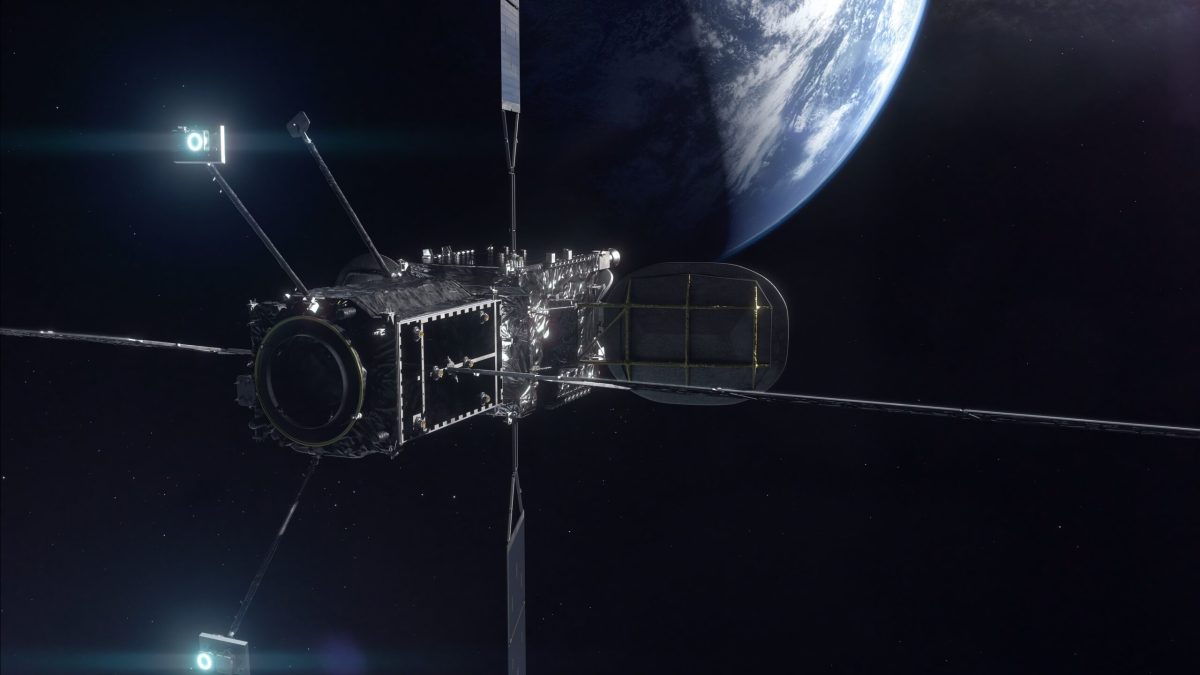TAMPA, Fla. — Intelsat has signed a deal to use the MEV-2 servicer currently docked with its 10-02 satellite to extend the aging spacecraft’s life by four more years to 2030.
Nothrop Grumman’s MEV-2 (Mission Extension Vehicle) has been fueling the 20-year-old spacecraft since becoming the first servicer to dock with an in-service geosynchronous commercial satellite in 2021.
Geosynchronous Earth orbit (GEO) satellites are typically designed to last 15-20 years before running low on fuel.
The 10-02 satellite has provided broadcast and broadband services for customers across Europe, the Middle East, Africa and South America since 2004. It is part of a joint venture with Norway’s Telenor Satellite, supporting their distribution of more than 900 channels to nearly 18 million households across Europe.
Intelsat’s contract with Nothrop Grumman’s SpaceLogistics subsidiary for the satellite was originally only for five years.
Intelsat also announced May 23 that it has extended its contract for MEV-1, which in 2020 docked with IS-901 in GEO graveyard orbit a few hundred kilometers above active satellites and lowered the spacecraft back into service.
Intelsat-901 was launched in 2001 and provides broadcast and broadband services over North and South America, Africa and Europe.
MEV-1 will use its onboard propulsion to relocate and release IS-901 back into GEO graveyard after their original five-year servicing period ends in 2025, the satellite operator said.
Intelsat said it has not yet determined the location and timeline of its next extension mission with MEV-1, and is still finalizing the exact timing for the new contract.
An Intelsat spokesperson said Space Logistics has a window to use MEV-1 for other missions before returning to fulfill Intelsat’s reservation.
Propulsion problems
Both MEVs were designed to have a design life of 15 years for performing multiple servicing missions.
However, multiple sources have told SpaceNews that they and two other spacecraft are operating with reduced power to their thrusters following a problem with onboard Power Processing Units (PPUs), which will have some impact on their design life.
Northrop Grumman has declined to comment.
In 2025, SpaceX is slated to launch a new servicing spacecraft from SpaceLogistics called Mission Robotic Vehicle (MRV), which would be equipped with a robotic arm for installing propulsion “jetpacks” designed to add six years of life to a GEO satellite.
Three of these Mission Extension Pods (MEPs) are due to ride with the MRV on the SpaceX Falcon 9 rocket next year. Intelsat has ordered two, and Australia’s Optus has ordered the third for missions set to begin in 2026.
Intelsat has not disclosed which satellites would be getting a 400-kilogram MEP.
SpaceLogistics expects to install as many as 30 of the fuel pods over the 3,000-kilogram MRV’s 10-year operational life.
The company has not released financial details but says installing MEPs with a robotic servicer would be cheaper and more efficient than attaching minivan-sized MEVs to satellites. MEV-1 and MEV-2 had a launch mass of 2,330 kilograms and 2,875 kilograms, respectively.
